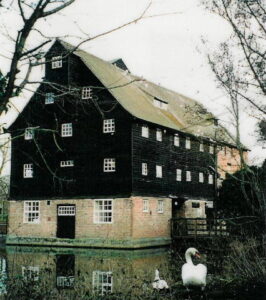Houghton
 A watermill has occupied the current site from before the Norman Conquest, when it was given by Earl Ailwyn to Ramsey Abbey at its foundation in 969 AD, the gift was not confirmed until 974 AD.
A watermill has occupied the current site from before the Norman Conquest, when it was given by Earl Ailwyn to Ramsey Abbey at its foundation in 969 AD, the gift was not confirmed until 974 AD.
In the year 1086 (Domesday), the watermill was valued at twenty shillings, at the time of the dissolution in 1539 the Crown had ownership of the mill.
No one knows how old the village is. It was known as Houlton in the 10th century, then changed to Hoctune a century later, the present name was adopted in the 15th century. Broadly speaking the village originated in Saxon times and its name means ‘ farm on a hill spur ‘.
Records show that in 974 Ailwyn bought a meadow along with a mill at Houghton and gave both of them to the Abbey, the mill then was of little value, probably consisting of just a waterwheel driving a pair of stones. Domesday records shows it was worth the aforementioned twenty shillings in 1086 and had gone up to 100 shillings by 1165.
The mill managed to continue in business because Ramsey Abbey tenants were fined heavily if they did not use Houghton mill to grind their corn. The millers charges, usually paid in meal, went to the abbey. In 1399 the mill was leased for ten years at ten marks (13s. 4d) per year.
In 1086 the Domesday Book lists Ramsey Abbey holdings in Houghton as 7 hides valued at £8, by 1095 that and the 7 hides at Wyton were valued at £17, £10 + farm in 1135, £60 in 1140, by 1170 the value of the estates rose £37. 15s. 6d just for Houghton, by 1201 it reverted back to a combined figure with Wyton of £10 + farm. (Ref 25)
